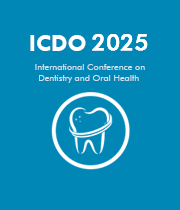Title: Remineralization efficacy of bioactive-incorporating resin composites on decayed teeth
Abstract:
Objective: This study aimed to evaluate and compare the enamel tooth structure remineralization efficacy after using resin-based composites contains different bioactive fillers.
Methods: Extracted sound premolar teeth (n=80) were embedded in self-polymerizing acrylic resin, cleaned, and polished. Teeth exhibiting caries, cracks, restorations, erosion, or hypoplasia were excluded. Artificial demineralized lesions were induced using a standard demineralization solution. Three different types of bioactive filler were prepared as follows: (i)fluoride-containing bioactive glass (58S) (58% SiO2, 33% CaO, 9% P2O5); (ii)Nano amorphous calcium phosphate (NACP; Ca3(PO4)2) and (ii) standard 45S5 bioactive glass powder. All of these fillers were made by using a mixing of Urethane dimethacrylate (UDMA; > 97%), triethylene glycol dimethacrylate (TEGDMA; > 95%), 2-(N,N-dimethylamino)ethyl methacrylate (DMAEMA; 98%) resin matrix. The remineralization efficacy was evaluated using Raman spectroscopy and micro-computed tomography (micro-CT).
Results: The standard demineralization solution exposure resulted in significant mineral loss. The Raman intensity reduced to 44.69 ± 5.07 and 38.10 ± 4.36, respectively, at 3d). All bioactive resin composites showed a significant increase in the remineralization capacity as phosphate band intensity (p< 0.05), though fluoride-containing bioactive glass (58S) exhibited enhanced efficacy in subsurface enamel.
Conclusions: Clinically, the results support the use of fluoride-containing bioactive glass formulations for managing high-risk caries lesions and minimizing cariogenic biofilms.



